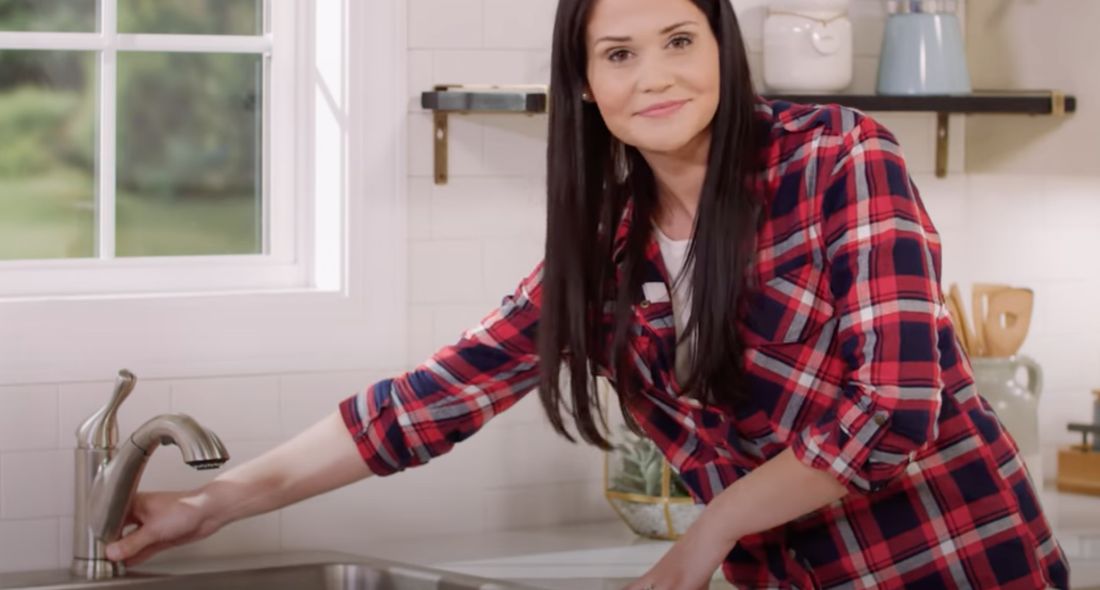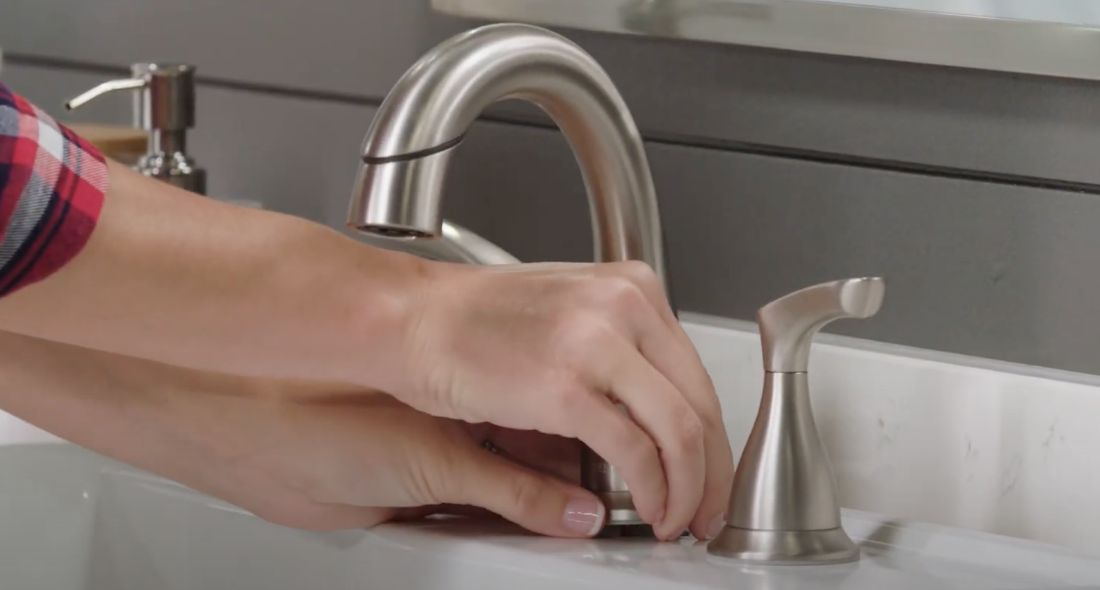Our Explanations Behind Dealing with a Broken Faucet
Our Explanations Behind Dealing with a Broken Faucet
Blog Article
They are making a few great annotation relating to What Causes Leaky Faucets & How To Fix Them overall in the content in the next paragraphs.

Trickling taps might feel like a small inconvenience, but their effect surpasses just the inconvenience of the noise. From drainage to sustaining unneeded financial costs and health dangers, ignoring a dripping faucet can result in different repercussions. In this short article, we'll explore why it's important to address this common family problem quickly and efficiently.
Wastage of Water
Ecological Effect
Trickling faucets contribute significantly to water wastage. According to the Environmental Protection Agency (EPA), a single tap leaking at one drip per second can waste greater than 3,000 gallons of water annually. This not just stress water resources however also impacts communities and wild animals based on them.
Step-by-Step Overview to Repairing a Dripping Tap
Devices Required
Before trying to fix a leaking tap, collect the necessary tools, including a flexible wrench, screwdrivers, substitute components (such as washing machines or cartridges), and plumber's tape.
Common Faucet Issues and Their Solutions
Identify the type of faucet and the particular problem triggering the drip. Typical issues include worn-out washers, corroded shutoff seats, or faulty O-rings. Describe maker directions or on the internet tutorials for step-by-step advice on fixings.
Financial Prices
Boosted Water Bills
Past the ecological impact, trickling faucets can inflate water bills substantially. The gathered waste with time equates right into higher energy expenses, which can have been avoided with prompt repairs.
Prospective Home Damage
In addition, prolonged leaking can cause harm to fixtures and surfaces surrounding the tap. Water buildup can create discoloration, deterioration, and even architectural issues if left unattended, resulting in added repair costs.
Health and wellness Worries
Mold And Mildew and Mildew Growth
The continuous presence of moisture from a dripping faucet produces a suitable atmosphere for mold and mildew development. These fungis not only endanger interior air high quality yet likewise position health dangers, especially for people with respiratory system problems or allergic reactions.
Waterborne Diseases
Stationary water in trickling taps can come to be a breeding place for germs and other microorganisms, enhancing the risk of waterborne diseases. Impurities such as Legionella microorganisms prosper in stagnant water, possibly bring about severe diseases when ingested or breathed in.
DIY vs. Specialist Repair service
Benefits and drawbacks of DIY Fixing
While some may try to repair a trickling faucet themselves, do it yourself repair work feature their own set of difficulties. Without correct understanding and devices, do it yourself attempts can worsen the concern or result in insufficient fixings, prolonging the problem.
Benefits of Employing a Specialist Plumber
Working with an expert plumber makes certain that the underlying cause of the dripping faucet is addressed efficiently. Plumbing technicians possess the know-how and tools to identify and repair faucet issues successfully, conserving time and lessening the risk of further damages.
Environmental Responsibility
Specific Payment to Conservation
Taking responsibility for fixing dripping taps lines up with broader initiatives toward water conservation and ecological sustainability. Every individual's activities collectively make a substantial effect on maintaining precious sources.
Sustainable Living Practices
By focusing on prompt repair services and taking on water-saving practices, people add to sustainable living practices that benefit both existing and future generations.
Safety nets
Regular Maintenance Tips
To prevent leaking faucets, do regular upkeep such as cleansing aerators, inspecting for leaks, and replacing worn-out parts promptly. Additionally, consider installing water-saving tools or updating to extra effective fixtures.
Importance of Prompt Services
Resolving leaking faucets as quickly as they're observed stops further water wastefulness and prospective damage, inevitably saving both water and cash in the long run.
Effect On Residential Property Value
Assumption of Well-Maintained Home
Keeping a building in good condition, including attending to upkeep issues like leaking taps, boosts its perceived value and desirability among prospective purchasers or lessees.
Impact on Resale Worth
Residences with properly maintained plumbing components, consisting of taps, command greater resale worths in the realty market. Attending to leaking taps can add to a favorable perception during home evaluations and negotiations.
Conclusion
Resolving a leaking faucet goes beyond simple benefit; it's an important action toward saving water, decreasing economic expenses, and safeguarding health and wellness and home. Whether via DIY fixings or expert aid, taking action to repair trickling taps is a little yet impactful way to advertise accountable stewardship of resources and contribute to a healthier, a lot more lasting future.
How to Fix a Dripping or Leaky Faucet
A leaking faucet is one of the most common problems that homeowners encounter, but it being commonplace doesn’t make it any less annoying. The constant drip drip drip of a leaking bathtub faucet, showerhead, or sink tap can disturb your home’s serenity. Left neglected, a dripping faucet can also result in higher water bills and discoloration or mold growth in your sink or plumbing fixtures.
Fortunately, you don’t have to be a trained plumber to know how to stop a dripping faucet. With some basic tools, replacement parts, and a little patience, leaky faucet repair is a breeze. In this article, we’ll explain what causes dripping faucets and how you can fix them.
What Causes a Leaking Faucet?
Kitchen and bathroom faucets come in all manner of designs, but most involve some combination of valves, O-rings, seals, and washers. The O-ring is usually the weakest link, but any one of these pieces can wear down over time. Heat, moisture, temperature fluctuations, minerals, mold, and movement can contribute to warping and corrosion, breaking the watertight seal. This just comes with the territory of being a homeowner. Everything is always subject to wear and tear, and some component parts of your appliances and fixtures need to be replaced on occasion. At least replacement O-rings are cheap!
More rarely, dripping faucets can be a symptom of excessively high water pressure. Were this the case in your home, you would probably notice that the leak is not isolated to one faucet. Water pressure issues are harder to resolve on your own. We recommend contacting a professional plumber if you suspect your water pressure is too high.
How to Fix a Dripping Faucet
Pipe wrench or monkey wrench Allen wrench set Screwdrivers Old towel or rag Shut off the water.
Before you do anything, you need to turn off the water to keep from drenching your kitchen or bathroom. You should find a valve under the sink and against the wall. Once you’ve turned this valve, try turning the faucet on to confirm that the water source has been cut off.
If you can’t locate your local valve for the faucet you’re working on, you can always shut off the water to the house at the main valve. Of course, this will prohibit anyone from using the sinks, showers, or toilets while you’re working on the faucet that’s giving you trouble.
Plug or block the drain.
You’ll be disassembling the faucet and removing some small bits of hardware. Plug the drain with a stopper or rag to avoid the possibility of a small screw falling into your P-trap.
Take apart the faucet assembly.
There are several varieties of kitchen and bathroom faucets, each with its own manner of assembly. For detailed instructions on how to disassemble your faucet, you can refer to the fixture’s manual or contact the manufacturer. If you know whether you have a ball, disc, cartridge, or compression faucet, you can find detailed schematics online.
In general, you need to begin by removing the faucet handles. You might notice a small screw that you’ll need to remove with a screwdriver or Allen wrench. If you don’t see any visible securing hardware, it’s likely hidden under a decorative cap that can be unscrewed or popped off with flathead screwdriver.
Remove each piece methodically, consulting a schematic when necessary. Take notes or arrange the pieces in such a way to make it easier to correctly reassemble the faucet later.
Remove the cartridge.
Once you’ve removed the handles and securing hardware, you should be able to remove the valve cartridge or stem. Some cartridges will slide right out. Other faucet models will require you to loosen a nut with a pipe wrench before you can remove the valve stem.
Examine the exposed hardware.
With the cartridge or stem removed, inspect the component parts. Check the rubber O-rings for wear and tear. Also examine the seat washer for corrosion or other damage. These pieces are usually the responsible parties for a dripping faucet, but it’s worth inspecting the other component parts while you have the faucet disassembled.
Find replacement parts.
Once you’ve identified which faucet component has failed, find an identical replacement. Your local hardware store should have O-rings, seat washers, and other standard components in stock. If you have a luxury or uncommon faucet, you may have to contact the manufacturer for a replacement part.
It’s a good idea to take your old parts with you to the hardware store so you can compare them with the store’s inventory and be sure you’re purchasing the correct replacement.
Reassemble the faucet.
With your new parts in hand, reconstruct the faucet and handles. Don’t be tempted to overtighten screws or nuts. You might think this could create a better seal, but it can instead damage or bend a delicate part of the assembly and create a new problem for you.
Turn on the water and test the faucet.
The only thing left to do is test your work. Unplug the sink, turn the water back on, and try the faucet. Congratulate yourself on a job well done!
https://www.libertyhomeguard.com/how-to-fix-a-dripping-or-leaky-faucet/

I'm just very focused on Why Are My Faucets Dripping (And Can I Fix It Myself)? and I'm hoping you liked our page. If you enjoyed reading our page plz don't forget to pass it around. Thanks a lot for being here. Return soon.
Report this page